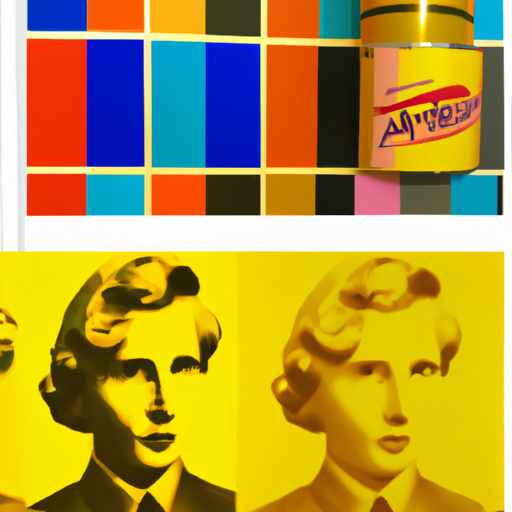
-
Table of Contents
- Designing for Cultural Diversity and Inclusion
- The Importance of Cultural Diversity and Inclusion in Design
- Best Practices for Designing for Cultural Diversity and Inclusion
- 1. Conduct Research and User Testing
- 2. Avoid Stereotypes and Assumptions
- 3. Embrace Multilingualism
- 4. Consider Accessibility and Inclusivity
- 5. Collaborate with Diverse Teams
- Case Studies: Designing for Cultural Diversity and Inclusion
- 1. Airbnb
- 2. Google
- 3. IKEA
- The Benefits of Designing for Cultural Diversity and Inclusion
- Summary
Designing for Cultural Diversity and Inclusion

In today’s globalized world, cultural diversity and inclusion have become increasingly important considerations in various aspects of society, including design. Designers play a crucial role in shaping the products, services, and experiences that people interact with on a daily basis. By designing with cultural diversity and inclusion in mind, designers can create more meaningful and inclusive experiences that cater to the needs and preferences of diverse audiences. This article explores the significance of designing for cultural diversity and inclusion, provides insights into best practices, and highlights the benefits of embracing diversity in design.
The Importance of Cultural Diversity and Inclusion in Design
Cultural diversity refers to the presence of multiple cultures and ethnicities within a society, while inclusion refers to the active involvement and participation of individuals from diverse backgrounds. Designing for cultural diversity and inclusion is crucial for several reasons:
- Representation: Designing with cultural diversity in mind ensures that different cultures and ethnicities are represented in the products and services we use. This representation is essential for fostering a sense of belonging and inclusivity among diverse communities.
- User-Centricity: By considering the needs, preferences, and cultural backgrounds of diverse users, designers can create products and services that are more user-centric and tailored to specific cultural contexts. This leads to better user experiences and increased customer satisfaction.
- Market Expansion: Embracing cultural diversity in design allows businesses to tap into new markets and reach a wider range of customers. By understanding and catering to the unique needs and preferences of different cultural groups, companies can gain a competitive advantage and drive business growth.
- Innovation: Cultural diversity fosters innovation by bringing together different perspectives, ideas, and experiences. When designers collaborate with individuals from diverse backgrounds, they can leverage these diverse insights to create innovative and groundbreaking solutions.
Best Practices for Designing for Cultural Diversity and Inclusion
Designing for cultural diversity and inclusion requires a thoughtful and intentional approach. Here are some best practices that designers can follow:
1. Conduct Research and User Testing
Before embarking on the design process, it is crucial to conduct thorough research and user testing to understand the cultural nuances and preferences of the target audience. This can involve conducting surveys, interviews, and focus groups with individuals from diverse cultural backgrounds. By gaining insights into their needs, expectations, and cultural sensitivities, designers can create more inclusive and culturally relevant designs.
2. Avoid Stereotypes and Assumptions
Designers should be mindful of avoiding stereotypes and assumptions when designing for cultural diversity. Stereotypes can perpetuate biases and reinforce cultural misconceptions. Instead, designers should focus on understanding the unique characteristics and values of different cultures and incorporate them in a respectful and authentic manner.
3. Embrace Multilingualism
In a globalized world, language plays a significant role in cultural diversity and inclusion. Designers should consider incorporating multilingual elements in their designs to cater to diverse language preferences. This can include providing language options, using symbols and icons that are universally understood, and ensuring that translations are accurate and culturally appropriate.
4. Consider Accessibility and Inclusivity
Designing for cultural diversity also means considering accessibility and inclusivity for individuals with disabilities or impairments. Designers should ensure that their designs are accessible to people with different abilities, including those with visual, hearing, or motor impairments. This can involve using appropriate color contrasts, providing alternative text for images, and designing intuitive navigation.
5. Collaborate with Diverse Teams
Creating inclusive designs requires diverse perspectives. Designers should actively seek collaboration with individuals from different cultural backgrounds, as well as those with different abilities and experiences. By working with diverse teams, designers can gain valuable insights and challenge their own biases, leading to more inclusive and culturally sensitive designs.
Case Studies: Designing for Cultural Diversity and Inclusion
Several companies and organizations have successfully embraced cultural diversity and inclusion in their design processes. Let’s explore a few inspiring case studies:
1. Airbnb
Airbnb, a global online marketplace for lodging and tourism experiences, has made significant efforts to design for cultural diversity and inclusion. They have implemented features such as translation services, allowing hosts and guests to communicate in their preferred languages. Airbnb also provides cultural guides and recommendations to help travelers understand and respect local customs and traditions.
2. Google
Google is known for its commitment to diversity and inclusion in design. They have developed inclusive design guidelines that provide designers with principles and best practices for creating products that are accessible and inclusive for all users. Google also actively collaborates with diverse communities to ensure that their products cater to a wide range of cultural backgrounds and needs.
3. IKEA
IKEA, the Swedish furniture retailer, has embraced cultural diversity in their product designs. They offer a wide range of furniture and home decor items that cater to different cultural preferences and lifestyles. For example, IKEA has developed furniture designs that are specifically tailored to small living spaces, which are common in densely populated cities in Asia.
The Benefits of Designing for Cultural Diversity and Inclusion
Designing for cultural diversity and inclusion brings numerous benefits to both designers and users:
- Enhanced User Experience: Inclusive designs cater to the diverse needs and preferences of users, resulting in improved user experiences and increased customer satisfaction.
- Increased Market Reach: By embracing cultural diversity, businesses can tap into new markets and reach a wider range of customers, leading to business growth and increased revenue.
- Innovation and Creativity: Cultural diversity fosters innovation by bringing together different perspectives and ideas. Designers who embrace diversity are more likely to create innovative and groundbreaking solutions.
- Social Impact: Designing for cultural diversity and inclusion has a positive social impact by promoting inclusivity, breaking down barriers, and fostering a sense of belonging among diverse communities.
Summary
Designing for cultural diversity and inclusion is essential in today’s globalized world. By embracing cultural diversity, designers can create more meaningful and inclusive experiences that cater to the needs and preferences of diverse audiences. Best practices such as conducting research, avoiding stereotypes, embracing multilingualism, considering accessibility, and collaborating with diverse teams can help designers create more inclusive and culturally sensitive designs. Companies like Airbnb, Google, and IKEA have successfully implemented cultural diversity and inclusion in their design processes, leading to enhanced user experiences and increased market reach. The benefits of designing for cultural diversity and inclusion include improved user experiences, increased market reach, innovation, and positive social impact. By prioritizing cultural diversity and
